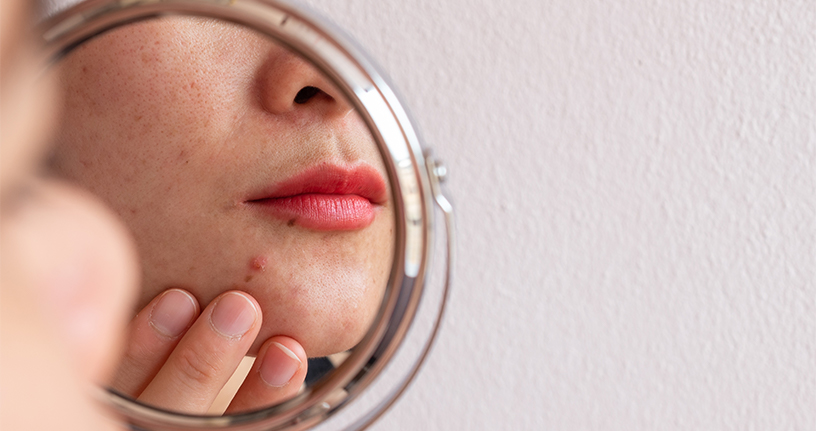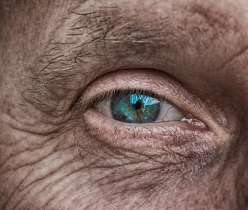Tretin cream containing the active ingredient tretinoin has been a staple in dermatology for several decades. Tretinoin is considered one of the most effective topical formulations. It can address skin problems such as hyperpigmentation, acne, scars, skin texture, and wrinkles. However, it can be tough to get accessible information about this skincare agent and its strengths. This is because it is a prescription-only topical treatment. One of the most asked questions is what strengths Tretin comes with and if this has any effect on its benefits. In this article, we will be exploring what to choose between Tretin 0.025 and 0.05%. We also discuss Tretin 0.025 cream use, side effects, and whether the higher strength 0.05% is best for acne, hyperpigmentation, and wrinkles.
What is tretin?
First, let’s have a quick look at the Tretin cream benefits. The topical tretinoin is a powerful derivative of vitamin A. It has a long track of safety and is supported by numerous scientific studies for its effectiveness in treating acne, reducing wrinkles, improving skin texture, and evening out skin tone. Tretinoin is usually available as a cream or gel. Tretinoin gel used for acne and hyperpigmentation is best for people with oily skin, while the cream formulation is an effective solution for dry skin. Tretinoin comes as a single ingredient or with other products like hydroquinone or antibiotics. It works to promote rapid cell turnover and boost the production of collagen by your skin cells. In the US, Tretin use is allowed with prescription only.
Tretin is available in 0.025 and 0.05 strengths. These are the concentrations most frequently encountered in branded formulations, such as tretin cream 0.025 and tretin 0.05 cream 30 gm. These different tretin strengths offer a range of potency from mild to strong. The 0.025 strength is five times stronger than the highest concentration of over-the-counter retinol. It is often best for those with skin of color, rosacea, and sensitive skin. It offers a gentle introduction, effectively treating acne and early signs of aging while minimizing potential irritation. For those new to tretinoin, the best choice is to pick tretin 0.025
How to use Tretin formulation?
However, it can mark a difference in your skin. Only once, nightly application is adequate to improve your skin’s appearance significantly. Moving up to the higher strength, tretin 0.05 cream is up to ten times stronger than over-the-counter retinoids. The concentration strikes a balance between safety and potency. This is for enhanced effectiveness in reducing wrinkles and improving skin texture. The regular once-nightly application can resolve all skin issues without being too harsh.
For experienced retinoid users and those with severe acne, hyperpigmentation, or wrinkles, tretin 0.05% use may be required. Tretin 0.05 cream benefits are numerous, as mentioned above. However, with an increased strength comes a greater likelihood of side effects. These include redness, purging, dryness, post-inflammatory hyperpigmentation, and peeling. This is why it is crucial to approach higher strength with caution.
For this reason, Tretinoin gel and cream are a prescription-only topical drug. Your dermatologist will consider your skin type, severity of skin concerns, and existing skincare regimen. They will use this to determine which Tretin strength is appropriate for you to start on. They will then adjust the frequency and dose of Tretin based on how your skin responds. This ensures optimal results with minimal adverse effects.
Note: The higher strength carries a high risk of side effects, but this doesn’t mean the lower strength does not cause side effects; in some cases, tretin 0.025 cream side effects may also occur, but they are more likely to happen at the initial days of application. Later, these side effects resolve on their own.
The best Tretin dose for different skin concerns
Numerous factors affect your decision about which tretinoin strength to start you on. Usually, this is the lowest dose for those with sensitive skin or are beginners to this new treatment regimen. However, for those with old users of retinoids, tolerance to active skincare may be started on higher strengths. In general, most people start this formulation on a lower dose and gradually go higher in strength with time. However, not everyone must reach higher strength either because their skin doesn’t tolerate it or don’t require it, as they see positive results with lower doses. So, the optimal strength to begin and continue largely depends on your skin concerns and tolerance.
A starting dose of 0.025% is often prescribed for those dealing with mild to moderate acne, providing effective treatment while reducing irritation. As the skin adapts, some may benefit from an increase to tretin 0.05 uses. If required, to improve the acne-fighting properties. When dealing with signs and symptoms such as fine lines, uneven skin tone, and wrinkles, a 0.05% tretin concentration may sometimes be considered an effective starting treatment for those with a long history of tretin 0.05 cream uses and who do not suffer from sensitivity or skin inflammatory conditions.
Are a higher concentration of tretin is always better?
The idea that higher strengths of tretinoin are always effective is a common misconception. The optimal strength of tretin varies depending on the individual’s skin concerns, goals, and tolerance. So, although the higher strength of tretin is more potent and may offer quicker or more advanced results, it also carries a high risk of side effects. That is why it is always best to begin with lower strength for those with sensitive skin or a beginner at tretin.
It is important to note that more isn’t always better with tretinoin formulation. Using a higher strength than your skin can tolerate doesn’t necessarily enhance the benefits. Instead, it can worsen adverse effects and potentially harm the skin barrier.



